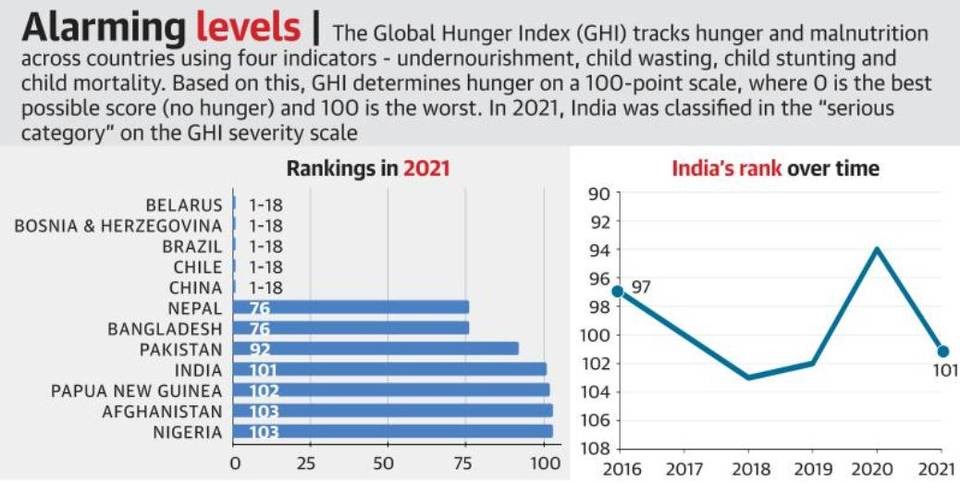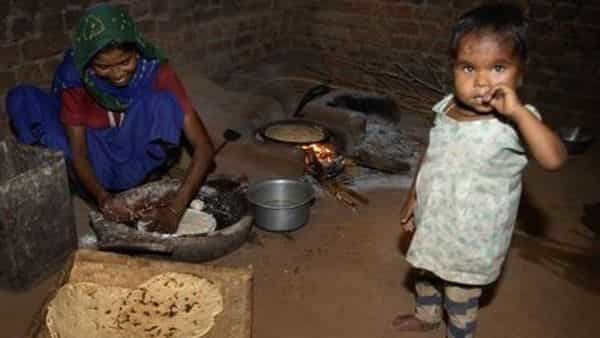Global Hunger Index
Figure 2: No Copyright Infringement Intended
Context:
India was ranked 101 in the Global Hunger Index (GHI) for 2021 from 94 in the previous year, trailing behind its South Asian neighbours Pakistan, Bangladesh and Nepal.
Report Finding:
- The report termed the level of hunger in India as “alarming".
- The report said that wasting among children in India increased from 17.1% between 1998 and 2002 to 17.3% between 2016 and 2020.
- Though India showed improvement in indicators such as the under-5 mortality rate, prevalence of stunting among children and prevalence of undernourishment owing to inadequate food remained high.
- Worsening conflict, weather extremes associated with global climate change, and the economic and health challenges associated with the covid-19 pandemic are all driving hunger.
- it is difficult to be optimistic in 2021 because the forces driving hunger are overpowering good intentions and lofty goals.
About Global Hunger Index:
- The GHI has been brought out almost every year by Welthungerhilfe (lately in partnerships with Concern Worldwide) since 2000
- The GHI slots countries on a scale ranging from “low” hunger to “moderate”, “serious”, “alarming”, and “extremely alarming”.
- India is one of the 47 countries that have “serious” levels of hunger.
- A low score gets a country a higher ranking and implies a better performance.
- The reason for mapping hunger is to ensure that the world achieves “Zero Hunger by 2030” — one of the Sustainable Development Goals laid out by the United Nations.
- It is for this reason that GHI scores are not calculated for certain high-income countries.
- In a formal sense, GHI is calculated by mapping the level of calorie intake.

Calculation of Global Hunger Index:
- Undernourishment (which reflects inadequate food availability): calculated by the share of the population that is undernourished (that is, whose caloric intake is insufficient).
- Child Wasting (which reflects acute undernutrition): calculated by the share of children under the age of five who are wasted (that is, those who have low weight for their height).
- Child Stunting (which reflects chronic undernutrition): calculated by the share of children under the age of five who are stunted (that is, those who have low height for their age).
- Child Mortality (which reflects both inadequate nutrition and unhealthy environment): calculated by the mortality rate of children under the age of five (in part, a reflection of the fatal mix of inadequate nutrition.




1.png)
